Lynching, stoning and burning: The 1919 'Red Summer' race riots that America and Britain want you to forget but which echo today
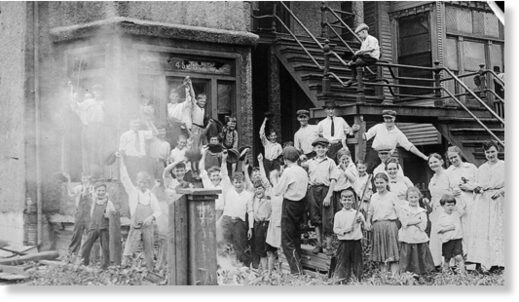
29 June, 2020
In 1919, hundreds of people were murdered in race riots across the US and UK. Men, women and children were butchered. So why is it a footnote in history? Because the media and governments don't want you to know how they reacted.
Warning: The following article contains images that may be disturbing to some readers
Remember when we thought that 2020 was going to be the Year of Coronavirus? Then along came the murder of George Floyd and the subsequent protests, violent unrest and clashes between police, the far right and anti-fascists. Covid-19 is going to have to share top billing.
Remember, too, how everyone compared the virus to the Spanish flu pandemic of 1918-19? And yet few people compared the protests and violence to another event from that time: "Red Summer". That's because these bloody and shameful few months in 1919 aren't the kind of history that countries want to teach their kids.
Red Summer saw hundreds of people killed in a series of race riots across the US. Most deaths were white-on-black - including people being lynched, stoned to death and burned at the stake - but it was also the first time the black population had resisted the violence, both peacefully and with force. And, while the words and images of such medieval savagery chill the blood, and the levels of cruelty astound a 21st-century sensibility, there are parallels with 2020.
So, what fuelled it and why has it been brushed under the carpet of history?
The US at the time was a deeply racially divided country led by President Woodrow Wilson - a supporter of the Ku Klux Klan who was against black suffrage and actually resegregated elements of American society. White-led race riots and lynchings were commonplace - from 1889 to 1918, more than 3,000 were lynched, 2,472 of whom were black men and 50 black women. Black people, despite emancipation 57 years earlier, had far fewer rights than white people. But what lit the touchpaper for the bloodshed of 1919, and what made it so significant, was the return of soldiers from World War One.
Armed, Angry And Ready to Fight
These soldiers, both white and black, were demobilised at a time of already-rising racial tension and economic difficulty. They were trained to fight and, in many cases, were suffering from "shell shock" (nowadays known as PTSD). Violence flared easily.
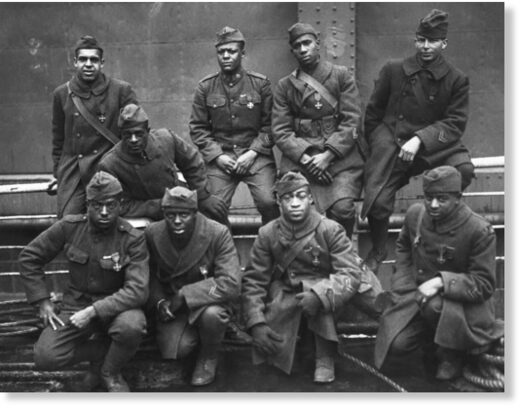 White servicemen jumped on fabricated rumours of white women being assaulted by "Negro fiends" - rumours sensationalised by the press - and went on random sprees of assault and murder. The Washington Post, that famously "liberal" rag, even ran a front-page story organising white servicemen to gather at a certain location so they could attack black people in the city en masse.
White servicemen jumped on fabricated rumours of white women being assaulted by "Negro fiends" - rumours sensationalised by the press - and went on random sprees of assault and murder. The Washington Post, that famously "liberal" rag, even ran a front-page story organising white servicemen to gather at a certain location so they could attack black people in the city en masse.
The white servicemen had also come home to cities with few available jobs and homes, an economy ravaged by war and a pandemic, and an influx of black workers from the South, due to war-related labour shortages.
By 1919, in the first wave of the Great Migration, an estimated 500,000 African Americans had moved to the industrial cities of the Northeast and Midwest. Between 1910 and 1920, the black population in Chicago grew by 148 per cent and in Philadelphia by 500 per cent. Alongside the economic effects, white people blamed these black migrants for spreading Spanish flu - a foreshadowing, perhaps, of those just waiting to blame a spike in Covid-19 infections on Black Lives Matter rallies.
Some black migrants prospered, creating a new black middle class. This both enraged and frightened people used to a "white privilege" that was off the charts compared to today.
Black soldiers returned to a different set of ire-inducing issues. They came home from risking their lives for their country to discover that their country and its president didn't see them as complete human beings. At least 13 black veterans were lynched after the war. They weren't war heroes; they were second-class citizens. But they were also motivated and emboldened.
A Bloody Rampage
"Red Summer" - a phrase coined by the National Association for the Advancement of Colored People's (NAACP) field secretary, James Weldon Johnson, referring to the bloodshed - was a series of events. The most serious of these began in April and ended in November. In that time, across dozens of American cities, white mobs, including women and children rampaged, destroying black properties and churches, and murdering black people.
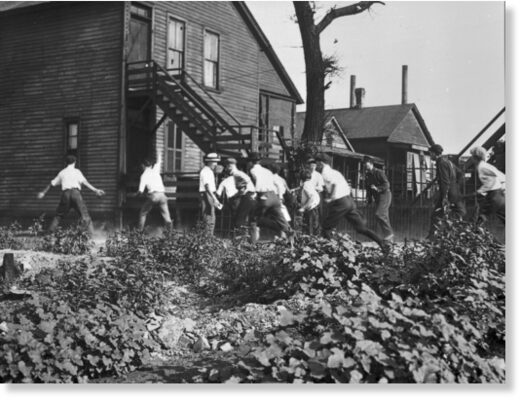 The Ku Klux Klan had a resurgence after decades of slumber, committing 64 lynchings in 1918 and 83 in 1919. In one of the deadliest events, more than 200 black Americans of all sexes and ages were massacred in Elaine, Arkansas, after black sharecroppers campaigned for better working conditions.
The Ku Klux Klan had a resurgence after decades of slumber, committing 64 lynchings in 1918 and 83 in 1919. In one of the deadliest events, more than 200 black Americans of all sexes and ages were massacred in Elaine, Arkansas, after black sharecroppers campaigned for better working conditions.
Many of the attacks were focused on those black veterans, who numbered around 380,000 and were seen as a threat to white supremacy and power. They had fought for their country, so why shouldn't they be treated the same as everyone else? They had returned battle-hardened and ready to stand up for equal rights and for themselves.
This meant that, in some cities, for the first time, black people fought back against the brutality, notably in Chicago and Washington, DC, where riots saw both black and white people killed (albeit still mostly black). In Chicago, 23 black people and 15 white people died after a black teenager, Eugene Williams, drifted on his raft into a whites-only section of Lake Michigan. He drowned when a white man, George Stauber, threw rocks at him, knocking him unconscious.
Despite several witnesses, a white police officer refused to arrest Stauber. Black people protested and, reacting to that, white mobs swarmed through the city, shooting at and torching buildings as they went. Still, the police did nothing, so black veterans organised to defend their neighbourhoods. The riots lasted a week and, alongside the 38 deaths, 537 people were injured and an estimated 1,000 to 2,000 lost their homes.
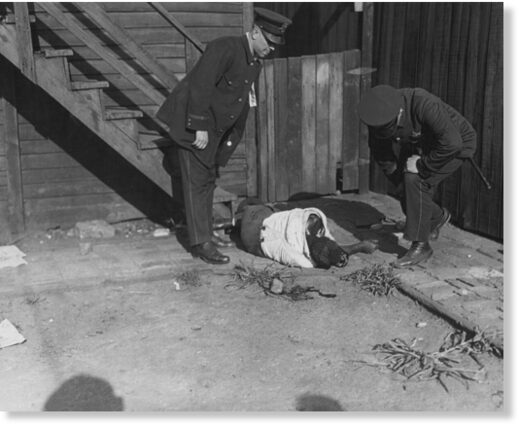 Similar riots took place in British cities, too - mainly in ports such as London, Glasgow, Liverpool, Cardiff and Hull. Five people were killed - all non-white - as soldiers returned from an even longer war than the Americans endured, to find similar hardship and similarly easy-to-blame minorities, including South Asian, African, Afro-Caribbean, Chinese and Arab sailors.
Similar riots took place in British cities, too - mainly in ports such as London, Glasgow, Liverpool, Cardiff and Hull. Five people were killed - all non-white - as soldiers returned from an even longer war than the Americans endured, to find similar hardship and similarly easy-to-blame minorities, including South Asian, African, Afro-Caribbean, Chinese and Arab sailors.
Ignored & Forgotten Because of Shame?
And yet few people know about any of this. There is relatively little reference to it in the mainstream or any other media. Nor in any school curriculum. This is probably because the greatest shame was how the press and authorities reacted.
In the UK, the British government, still with a huge multi-ethnic empire, intensified its repatriation scheme. It removed colonial citizens to avoid a "black backlash," offering a resettlement allowance. Between 1919 and 1921, an estimated 3,000 black and Arab seamen and their families were deported under the scheme.
In the US, black resistance was politicised. It was leapt on by the federal government and the press as being Marxist and pro-Soviet. This being just two years after the Russian Revolution, black-rights movements were labelled "Bolshevik." Sound familiar?
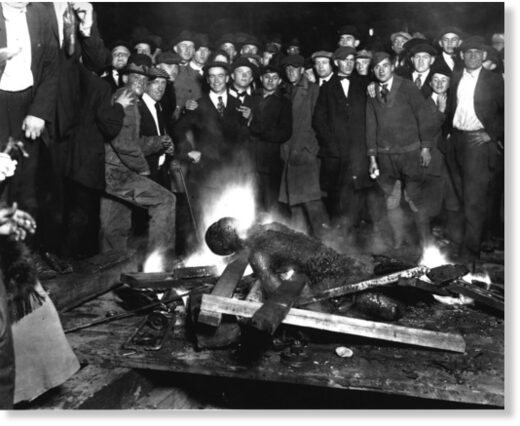 Just about every mainstream newspaper, including other supposedly "liberal" titles, such as the New York Times and Wall Street Journal, spun the line of black "Bolsheviks." The Times ran the headline "Reds Try to Stir Negroes to Revolt."
Just about every mainstream newspaper, including other supposedly "liberal" titles, such as the New York Times and Wall Street Journal, spun the line of black "Bolsheviks." The Times ran the headline "Reds Try to Stir Negroes to Revolt."
This was in part due to federal briefings to the press. The state was determined to ignore racial inequality and heap the blame on socialists. The attorney general, A. Mitchell Palmer, reported to Congress on the anarchist and Bolshevik threat, and accused black community leaders of an "ill-governed reaction toward race rioting."
The riots also coincided with the beginning of J. Edgar Hoover's notorious career. He blamed the Washington riots on "numerous assaults committed by Negroes upon white women," despite an absence of evidence, and the Elaine massacre on "agitation in a Negro lodge." He also initiated an investigation of "Negro activities."
While there were most certainly leftist elements at play, the resistance was without question a defensive reaction to years of unpunished violence by white individuals and mobs. There was no grey area in all this, no "very fine people" on both sides. Yet only one major report, by Dr George Haynes, a black civil servant and academic, in October 1919, recognised this, noting lynching as a national problem and connecting it to the riots.
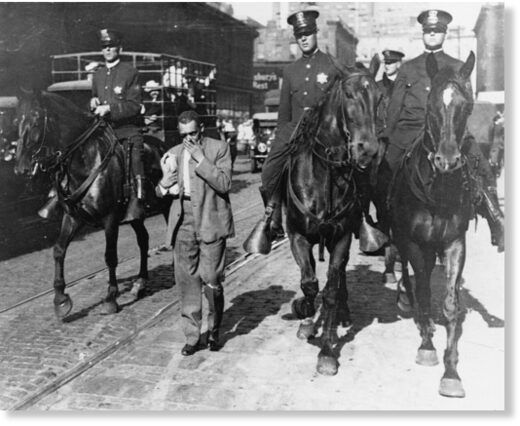 He wrote: "Persistence of unpunished lynchings of Negroes fosters lawlessness among white men imbued with the mob spirit and creates a spirit of bitterness among Negroes. In such a state of public mind, a trivial incident can precipitate a riot... Unchecked mob violence creates hatred and intolerance, making impossible free and dispassionate discussion, not only of race problems, but questions on which races and sections differ."
He wrote: "Persistence of unpunished lynchings of Negroes fosters lawlessness among white men imbued with the mob spirit and creates a spirit of bitterness among Negroes. In such a state of public mind, a trivial incident can precipitate a riot... Unchecked mob violence creates hatred and intolerance, making impossible free and dispassionate discussion, not only of race problems, but questions on which races and sections differ."
'American Apartheid'
President Wilson had condemned the violence but refused to take any significant action to stop it. Not only that, but after months in which black people were butchered in the most horrific and sadistic manners imaginable - strung up, stoned and burned alive - the authorities did nothing to improve their lot. No legal protections, no additional rights. Indeed, as Geoff Ward, a professor of African and African American studies at Washington University in St Louis, recently told NBC, it made things worse.
"That reign of racial terror, where again the exculpatory work of the white press, police, grand juries and others ensured that perpetrators were protected rather than punished, undoubtedly prolonged the period of American apartheid," he said.
The violence continued. More riots occurred, some even bloodier than those of 1919. Nothing changed for black people, but something did change in black people - something that carried through to the civil rights movement of the 1950s and 1960s, and into today. They were now prepared to fight back.
Warning: The following article contains images that may be disturbing to some readers
Remember when we thought that 2020 was going to be the Year of Coronavirus? Then along came the murder of George Floyd and the subsequent protests, violent unrest and clashes between police, the far right and anti-fascists. Covid-19 is going to have to share top billing.
Remember, too, how everyone compared the virus to the Spanish flu pandemic of 1918-19? And yet few people compared the protests and violence to another event from that time: "Red Summer". That's because these bloody and shameful few months in 1919 aren't the kind of history that countries want to teach their kids.
Red Summer saw hundreds of people killed in a series of race riots across the US. Most deaths were white-on-black - including people being lynched, stoned to death and burned at the stake - but it was also the first time the black population had resisted the violence, both peacefully and with force. And, while the words and images of such medieval savagery chill the blood, and the levels of cruelty astound a 21st-century sensibility, there are parallels with 2020.
So, what fuelled it and why has it been brushed under the carpet of history?
The US at the time was a deeply racially divided country led by President Woodrow Wilson - a supporter of the Ku Klux Klan who was against black suffrage and actually resegregated elements of American society. White-led race riots and lynchings were commonplace - from 1889 to 1918, more than 3,000 were lynched, 2,472 of whom were black men and 50 black women. Black people, despite emancipation 57 years earlier, had far fewer rights than white people. But what lit the touchpaper for the bloodshed of 1919, and what made it so significant, was the return of soldiers from World War One.
Armed, Angry And Ready to Fight
These soldiers, both white and black, were demobilised at a time of already-rising racial tension and economic difficulty. They were trained to fight and, in many cases, were suffering from "shell shock" (nowadays known as PTSD). Violence flared easily.

© Getty Images/Corbis
Nine African American soldiers who won the Croix de Guerre, 369th (15th NY) return home on the Stockholm, February 12,1919.
Nine African American soldiers who won the Croix de Guerre, 369th (15th NY) return home on the Stockholm, February 12,1919.
The white servicemen had also come home to cities with few available jobs and homes, an economy ravaged by war and a pandemic, and an influx of black workers from the South, due to war-related labour shortages.
By 1919, in the first wave of the Great Migration, an estimated 500,000 African Americans had moved to the industrial cities of the Northeast and Midwest. Between 1910 and 1920, the black population in Chicago grew by 148 per cent and in Philadelphia by 500 per cent. Alongside the economic effects, white people blamed these black migrants for spreading Spanish flu - a foreshadowing, perhaps, of those just waiting to blame a spike in Covid-19 infections on Black Lives Matter rallies.
Some black migrants prospered, creating a new black middle class. This both enraged and frightened people used to a "white privilege" that was off the charts compared to today.
Black soldiers returned to a different set of ire-inducing issues. They came home from risking their lives for their country to discover that their country and its president didn't see them as complete human beings. At least 13 black veterans were lynched after the war. They weren't war heroes; they were second-class citizens. But they were also motivated and emboldened.
A Bloody Rampage
"Red Summer" - a phrase coined by the National Association for the Advancement of Colored People's (NAACP) field secretary, James Weldon Johnson, referring to the bloodshed - was a series of events. The most serious of these began in April and ended in November. In that time, across dozens of American cities, white mobs, including women and children rampaged, destroying black properties and churches, and murdering black people.

© Getty Images/Chicago History Museum/Jun Fujita
A mob carrying bricks and stones chase an African American man through the streets and alleyways of Chicago, 1919.
A mob carrying bricks and stones chase an African American man through the streets and alleyways of Chicago, 1919.
Many of the attacks were focused on those black veterans, who numbered around 380,000 and were seen as a threat to white supremacy and power. They had fought for their country, so why shouldn't they be treated the same as everyone else? They had returned battle-hardened and ready to stand up for equal rights and for themselves.
This meant that, in some cities, for the first time, black people fought back against the brutality, notably in Chicago and Washington, DC, where riots saw both black and white people killed (albeit still mostly black). In Chicago, 23 black people and 15 white people died after a black teenager, Eugene Williams, drifted on his raft into a whites-only section of Lake Michigan. He drowned when a white man, George Stauber, threw rocks at him, knocking him unconscious.
Despite several witnesses, a white police officer refused to arrest Stauber. Black people protested and, reacting to that, white mobs swarmed through the city, shooting at and torching buildings as they went. Still, the police did nothing, so black veterans organised to defend their neighbourhoods. The riots lasted a week and, alongside the 38 deaths, 537 people were injured and an estimated 1,000 to 2,000 lost their homes.

© Getty Images/Chicago History Museum
Police officers examine the corpse of an African American man who had been stoned and beaten to death during the Chicago race riots, July 1919
Police officers examine the corpse of an African American man who had been stoned and beaten to death during the Chicago race riots, July 1919
Ignored & Forgotten Because of Shame?
And yet few people know about any of this. There is relatively little reference to it in the mainstream or any other media. Nor in any school curriculum. This is probably because the greatest shame was how the press and authorities reacted.
In the UK, the British government, still with a huge multi-ethnic empire, intensified its repatriation scheme. It removed colonial citizens to avoid a "black backlash," offering a resettlement allowance. Between 1919 and 1921, an estimated 3,000 black and Arab seamen and their families were deported under the scheme.
In the US, black resistance was politicised. It was leapt on by the federal government and the press as being Marxist and pro-Soviet. This being just two years after the Russian Revolution, black-rights movements were labelled "Bolshevik." Sound familiar?

© Wikipedia/University of Washington
Will Brown, victim of Omaha, Nebraska lynching. The charred corpse of Will Brown after being killed, mutilated and burned. 28 September 1919
Will Brown, victim of Omaha, Nebraska lynching. The charred corpse of Will Brown after being killed, mutilated and burned. 28 September 1919
This was in part due to federal briefings to the press. The state was determined to ignore racial inequality and heap the blame on socialists. The attorney general, A. Mitchell Palmer, reported to Congress on the anarchist and Bolshevik threat, and accused black community leaders of an "ill-governed reaction toward race rioting."
The riots also coincided with the beginning of J. Edgar Hoover's notorious career. He blamed the Washington riots on "numerous assaults committed by Negroes upon white women," despite an absence of evidence, and the Elaine massacre on "agitation in a Negro lodge." He also initiated an investigation of "Negro activities."
While there were most certainly leftist elements at play, the resistance was without question a defensive reaction to years of unpunished violence by white individuals and mobs. There was no grey area in all this, no "very fine people" on both sides. Yet only one major report, by Dr George Haynes, a black civil servant and academic, in October 1919, recognised this, noting lynching as a national problem and connecting it to the riots.

© Getty Images/Bettmann
Mounted police round up African Americans and escort them to a safety zone during the Chicago Race Riot of 1919.
Mounted police round up African Americans and escort them to a safety zone during the Chicago Race Riot of 1919.
'American Apartheid'
President Wilson had condemned the violence but refused to take any significant action to stop it. Not only that, but after months in which black people were butchered in the most horrific and sadistic manners imaginable - strung up, stoned and burned alive - the authorities did nothing to improve their lot. No legal protections, no additional rights. Indeed, as Geoff Ward, a professor of African and African American studies at Washington University in St Louis, recently told NBC, it made things worse.
"That reign of racial terror, where again the exculpatory work of the white press, police, grand juries and others ensured that perpetrators were protected rather than punished, undoubtedly prolonged the period of American apartheid," he said.
The violence continued. More riots occurred, some even bloodier than those of 1919. Nothing changed for black people, but something did change in black people - something that carried through to the civil rights movement of the 1950s and 1960s, and into today. They were now prepared to fight back.
Comment: The suggestion in the final paragraph above that the struggle for equal rights in the early 20th century is continuing today in the form of the recent BLM protests is, perhaps, an exaggeration. Today, black Americans have achieved equal rights under the law. There are no mobs of white people hunting down blacks. If anything, there is a significant risk that the BLM protests could devolve into black or BLM mobs hunting down white people.



No comments:
Post a Comment
Note: only a member of this blog may post a comment.